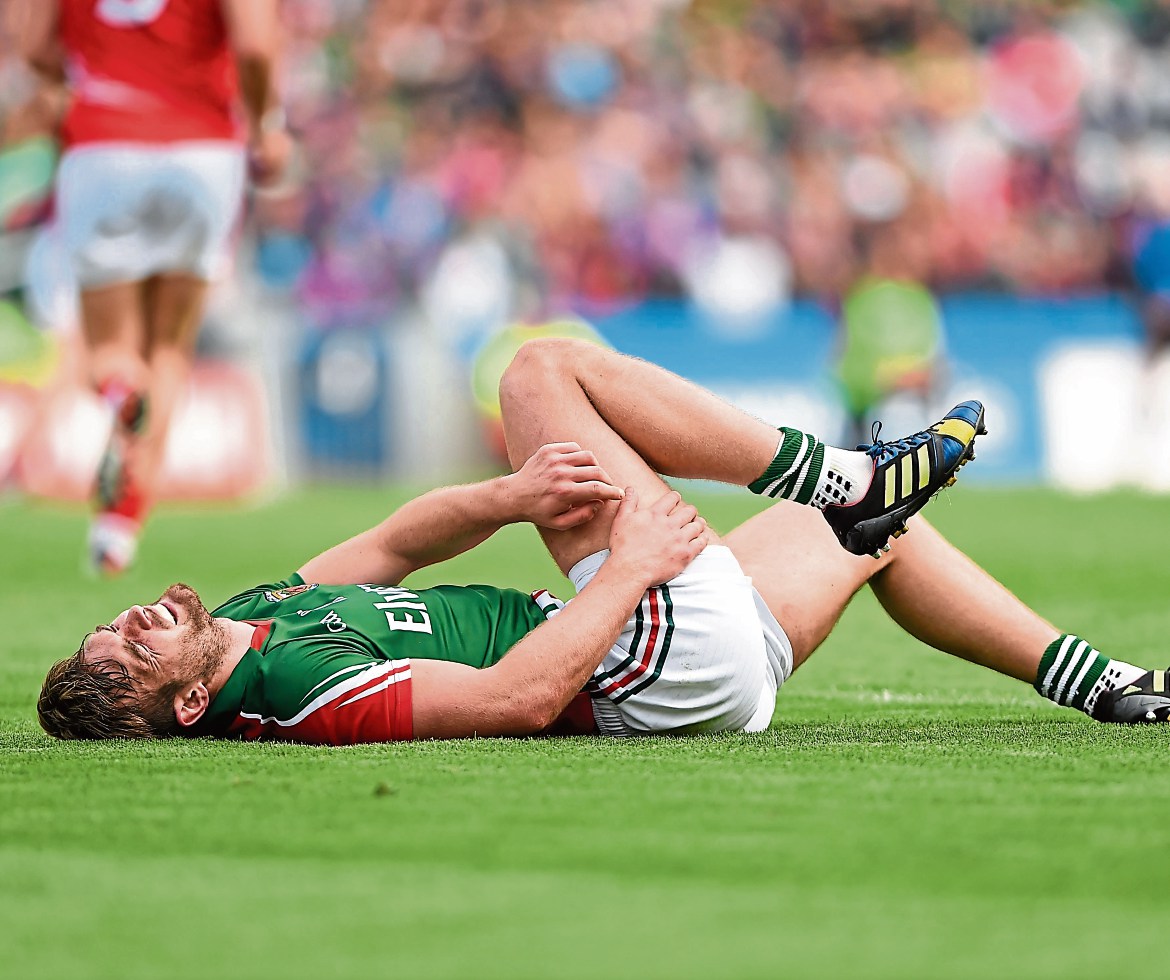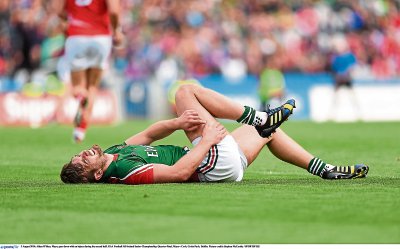By Jonny Kelly
THE occurrence of groin injuries in Gaelic sport has reduced over the years to as low as 1.97 per cent. However, if you have ever experienced groin problems, you will know these issues take weeks to months to resolve with the correct treatment.
Players often get frustrated by the slow, and sometimes lack of progress. One of the most common causes of groin symptoms in Gaelic sport is osteitis pubis.
We will discuss what it is, the symptoms, prognosis and treatment required to recover from it.
What is osteitis pubis?
Osteitis pubis affects athletes and is caused by repeated running, twisting, turning and kicking. This overuse injury leads to inflammation at the front part of the pelvis where the right and left halves of the pelvic bones meet.
Players will experience pain in the one side of their groin or lower abdominal area. In more severe cases, the pain can be on both sides.
The joint where the two pelvic bones meet in the middle has a thin layer of cartilage. The joint becomes inflamed and over time, can start to grow bony edges.
Managing groin pain can be complex as there are several surrounding structures that can cause symptoms.
If it is not clear from a clinical examination what is causing the symptoms, an MRI scan is required to confirm the structure at fault. This will allow the area to be fully assessed as an MRI will scan:
l Muscles
l Bone
l Tendons
l Cartilage
l Spine
The scan will make it possible to rule out other conditions and injuries such as adductor tendon injuries, hip joint injuries and sportsman’s hernia.
Osteitis pubis symptoms
The main symptom of osteitis pubis is groin or lower abdominal pain which is a result of inflammation in the joint and the surrounding muscles. The pain is usually a dull ache which eases with rest, but worsens with activity such as running and kicking.
Players often report a mild ache initially, which does not stop them from playing. The symptoms gradually increase over weeks, to the point they are no longer able to participate in activity.
How long does it last?
The severity of the condition will determine how long recovery will take.
Research into athletes from various sports with osteitis pubis, has shown it takes on average, two to four months to return to play.
During recovery, you might be able to slowly undertake certain activities that do not place large amounts of pressure on the area.
How do you treat osteitis pubis?
As with all conditions of this nature, it will heal with the correct management. The first step is to get the correct diagnosis. There are certain things that you can do to manage the pain to help you feel more comfortable.
This can include:
l Reduce activity or training load ● Change to low impact activity such as swimming or cycling
l Improve flexibility of any tight muscles that surround the pelvis
l Improve core stability strength
Running with osteitis pubis
When the symptoms are severe, an athlete will be unable to run at any speed, including light jogging. It is important to keep within pain-free running speeds and distances. This ensures the pelvis is not under unnecessary stress.
You should follow a specific running programme under the guidance of your sports physiotherapist or strength and conditioning coach, gradually building up to sprinting and turning at speed.
What to do now?
If you have groin pain playing sport, or you think you may have osteitis pubis, you should get assessed to find out what is going on. Once you get a diagnosis and start the recovery process, you should expect to be back on the pitch within four months of beginning your rehabilitation programme.
Are you frustrated with injury?
Jonny Kelly is a chartered Sports Physiotherapist and owns Physio Performance in Belfast. He has helped get world-class athletes back on the pitch and performing at their best. Contact us for a complimentary Sports Injury Consultation at www.physioperformance.co.uk
Receive quality journalism wherever you are, on any device. Keep up to date from the comfort of your own home with a digital subscription.
Any time | Any place | Anywhere













